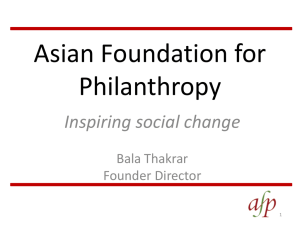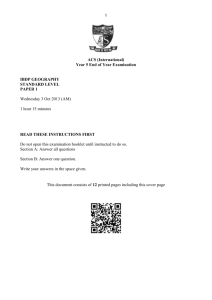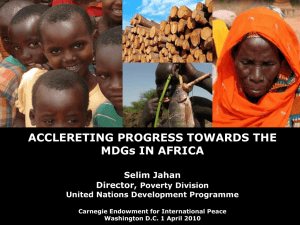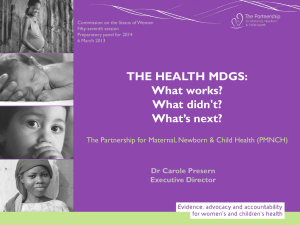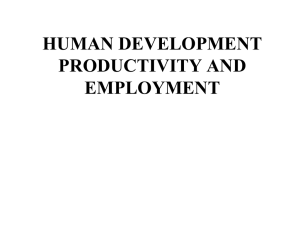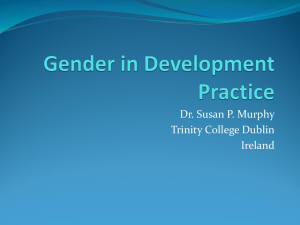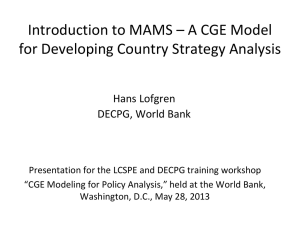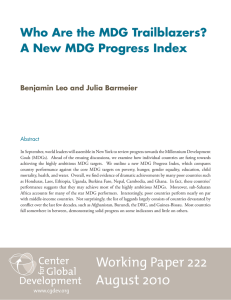World statistics icebreaker
advertisement
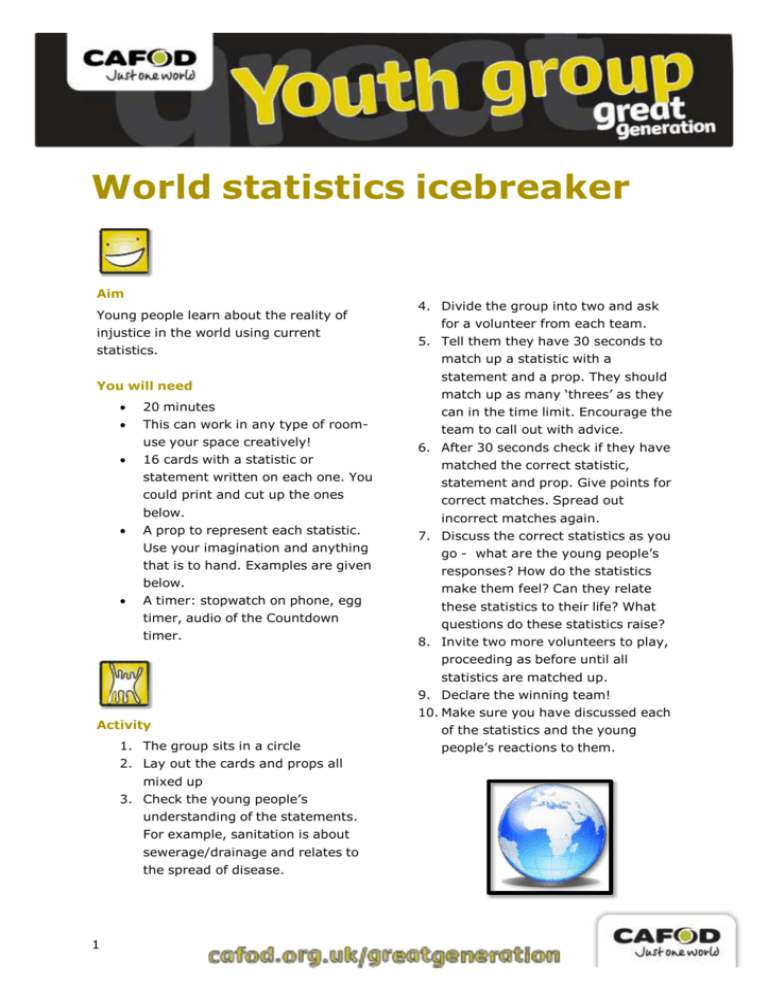
World statistics icebreaker Aim Young people learn about the reality of injustice in the world using current statistics. You will need 20 minutes This can work in any type of roomuse your space creatively! 16 cards with a statistic or statement written on each one. You could print and cut up the ones below. A prop to represent each statistic. Use your imagination and anything that is to hand. Examples are given below. A timer: stopwatch on phone, egg timer, audio of the Countdown timer. 4. Divide the group into two and ask for a volunteer from each team. 5. Tell them they have 30 seconds to match up a statistic with a statement and a prop. They should match up as many ‘threes’ as they can in the time limit. Encourage the team to call out with advice. 6. After 30 seconds check if they have matched the correct statistic, statement and prop. Give points for correct matches. Spread out incorrect matches again. 7. Discuss the correct statistics as you go - what are the young people’s responses? How do the statistics make them feel? Can they relate these statistics to their life? What questions do these statistics raise? 8. Invite two more volunteers to play, proceeding as before until all statistics are matched up. Activity 1. The group sits in a circle 2. Lay out the cards and props all mixed up 3. Check the young people’s understanding of the statements. For example, sanitation is about sewerage/drainage and relates to the spread of disease. 1 9. Declare the winning team! 10. Make sure you have discussed each of the statistics and the young people’s reactions to them. Taking it further Ask the group to choose the most surprising/worrying/difficult to solve statistic. You could do this by asking individuals to stand next to the one they think, then feedback, or come to a group decision through discussion. Challenge the group to make a human pie chart for each statistic. If your group represented the seven billion people in the world, how many would...for example have no access to clean water? (This will require some maths!) Explore some Catholic social teaching or scripture for example the parable of the sheep and goats, Matthew 25:31-46 (Powerpoint on cafod.org.uk/Education/YouthLeaders/Prayer). How does our faith call us to respond to inequality in the world? Use this icebreaker as a starter to a session on Millennium Development Goals (MDGs). Search ‘MDG’ on cafod.org.uk for more resources. Look on the website for further CAFOD activities on specific global justice issues cafod.org.uk/Education/YouthLeaders. 2 Pray Use the props and a candle as the focal point for a prayer at the end of the session. Statistics All statistics are accurate as of May 2015. You can find more statistics on the UN Development Programme website unstats.org.uk. Statistic Statement 6.6 Million1 Children who will die this year before their 5 birthday th Prop Related MDG Cake with 5 birthday MDG 4: Reduce child mortality candles in it (they MDG 5: Improve maternal could be lit, depending health on health and safety!) 42 Million2 58 Million3 Amount of people forced away from their home due House keys Dolls house MDG 1: Eradicate extreme poverty and hunger to war or persecution. Cushion/pillow Children who will not go to Exercise book MDG 2: Achieve universal school this year Textbook primary education Pen MDG 3: Promote gender equality and empowerment of women (65% of the 1 billion not at school will be girls) 64 Million4 748 Million5 Amount of people in the Union Jack UK Souvenir from UK People who have no access Jug/bottle of water to safe drinking water 1.25 Billion 1.1 billion6 7 Catholics in the world MDG 7: Ensure environmental sustainability Romero Cross People who have no access to electricity 1.2 Billion 8 7.3 Billion 9 People who live on less MDG 1: Eradicate extreme than 80p a day 80p A bag of pennies People who live on Earth Globe MDG 8: Secure a global Map partnership for development poverty and hunger 1 Most of the 6.6 million deaths in children under the age of five were from preventable diseases. (UN MDG report 2014) 2 Every day in 2013, 32,000 people had to abandon their homes to seek protection due to conflict. (UN MDG report 2014). Figure from refugeewelcometrust.org 3 Half of the children of primary school age not in school live in conflict affected areas (UN MDG report 2014.) Up a million since 2013. 4 In 2013. (ons.gov.uk) In 2013 there were 778,803 births and 576,458 deaths in the UK. 5 In 2013. Most of these live in rural areas. (UN MDG Report 2014) 6 Worldwide, about 1.1 billion people have no access to electricity and the development benefits it brings, and 1 billion more have access only to unreliable electricity networks. Nearly 3 billion people rely on traditional biomass (such as wood and charcoal) for cooking and heating (www.unfoundation.org) (http://www.trust.org/item/20150518163817-6o94b/) 7 At the end of 2013 there are an estimated 1.25 billion Roman Catholics in the world, according to Vatican figures. (National Catholic Reporter 2015) 8 About one in five persons in developing regions lives on less than $1.25 per day (UN MDG report 2014) 9 worldometers.info/world-population has a continuously updating population clock-worth a look with young people! (May 2015) 3 6.6 Million Children who will die this year th before their 5 birthday 4 Million People forced away from their home due to war or persecution 5 Million Children who will not go to school this year 6 64 Million People who live in the UK 7 748 Million People who have no access to safe drinking water 8 1.25 Billion Catholics in the world 9 Billion People who live on less than 80p a day 10 7.3 Billion People who live on Earth 11 1.1 Billion People who have no access to electricity 12

